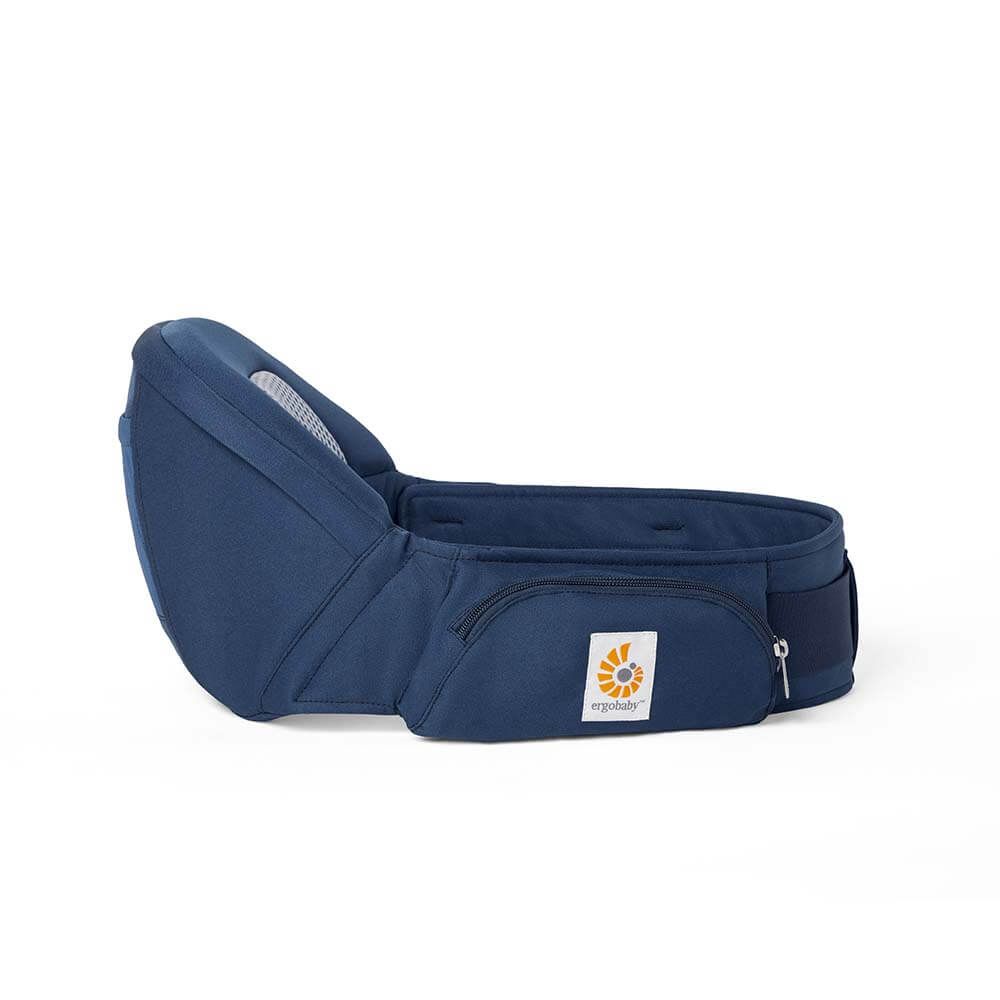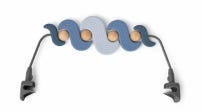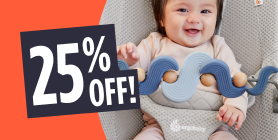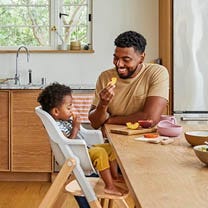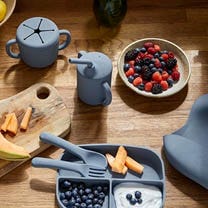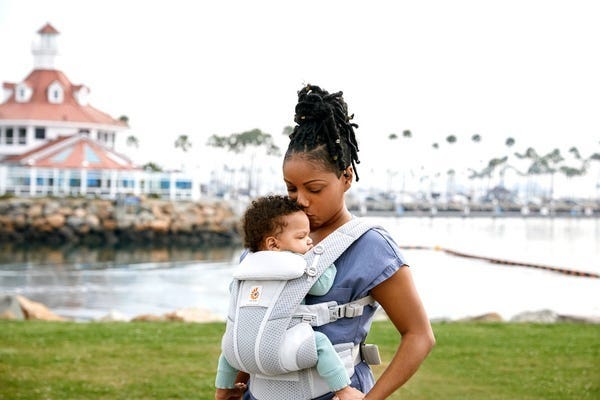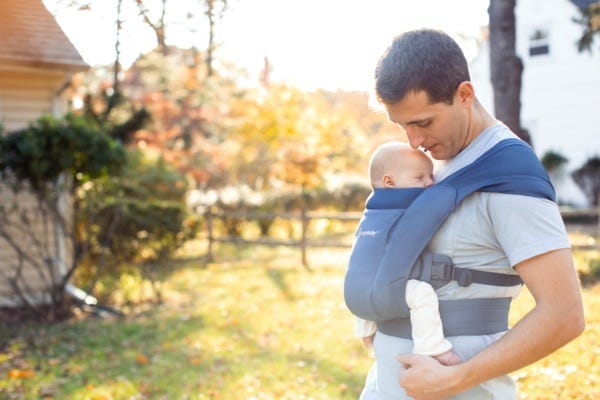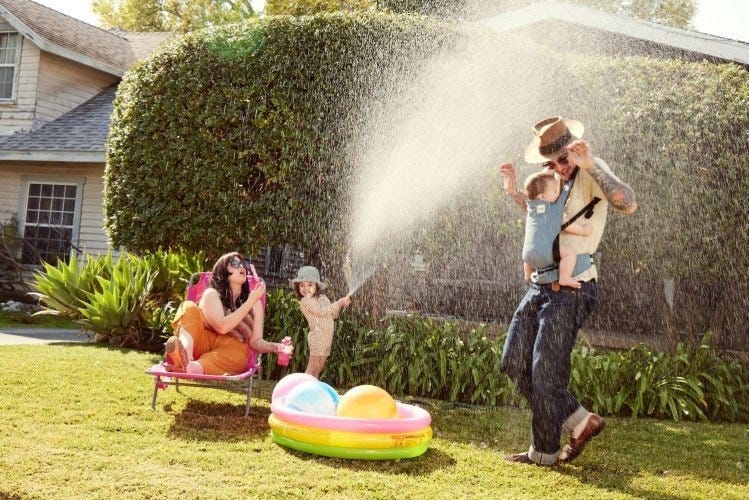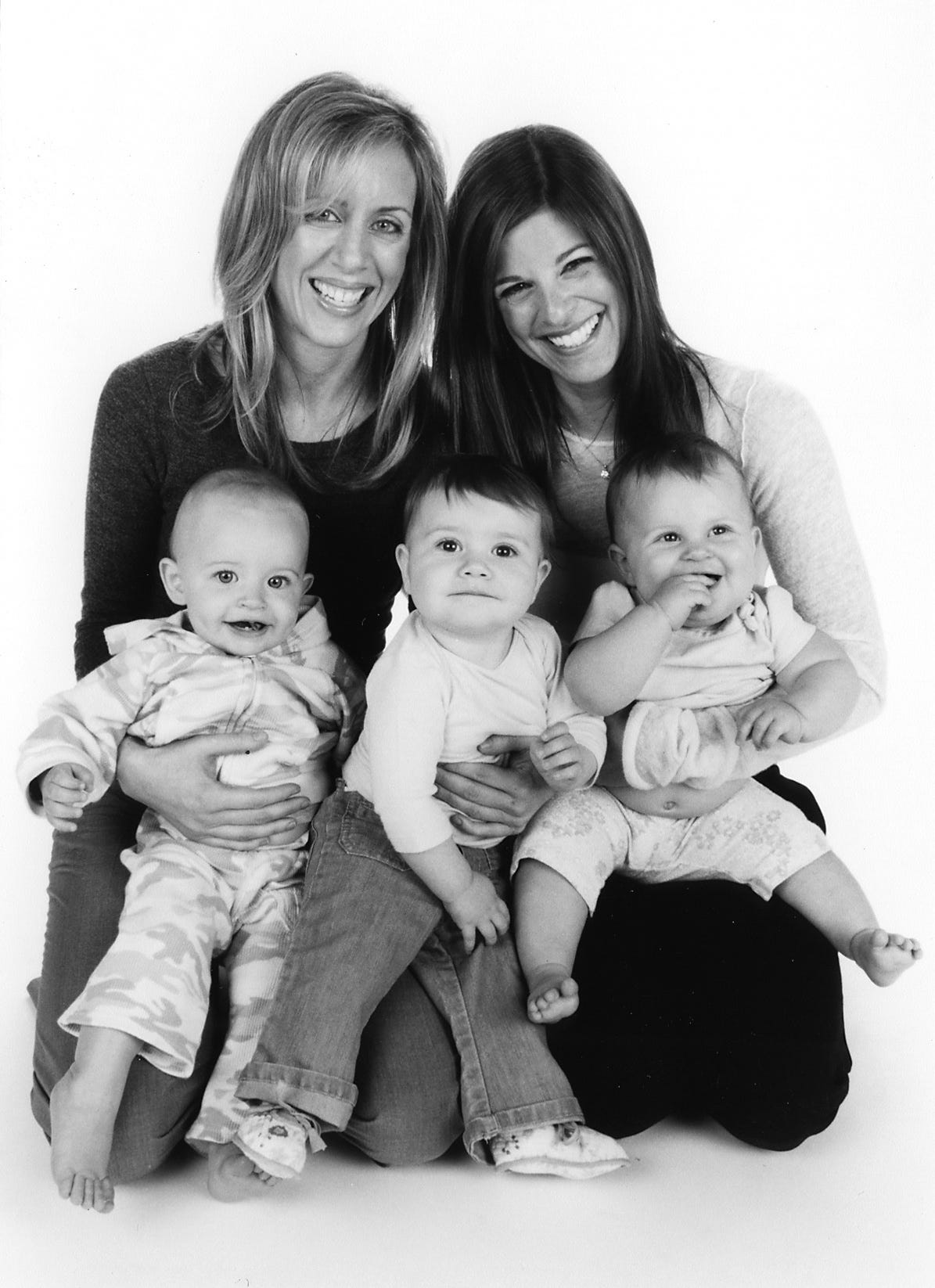
If a full night’s sleep for anyone in your household is starting to feel like a long-lost luxury, Sleepy Planet’s Jennifer Waldburger and Jill Spivack are the ladies of your (ahem) dreams. Their Sleepeasy Solution program and one-on-one consultations give parents strategies and tools to help kids sleep better and longer. Ergobaby caught up with them for some pillow talk.
What inspired you to start Sleepy Planet?
Jill: I was a practicing family therapist when I had my first baby 16 years ago, and he had a very nasty sleep problem. My son was waking every two hours at night, I was nursing every couple of hours and when I wasn’t, my husband was pacing the floors, bouncing and rocking the baby. This went on for eight months until we reached out to a parenting center in New York City where we were living; the center was doing a micro-version of the program we have now fleshed out in Sleepy Planet. Once I had resolved my sleep issues with my son, I was inspired to do this work (along with leading general parenting groups and counseling individuals and couples) because it was so amazing to be able to help a family in crisis turn the whole thing around within days. Once we moved back to Los Angeles, I joined forces with my best friend from college who had also become a family therapist, Jennifer Waldburger, and together, we started Sleepy Planet and created the book and DVD The Sleepeasy Solution.
What’s one of the biggest mistakes parents make when it comes to their kids and sleep?
Assuming that their baby cannot develop independent sleep skills. Many parents can’t believe their baby can become competent at self-soothing and therefore continue to intervene in helping the baby get to sleep and back to sleep throughout the night. This causes the baby to remain helpless in the middle of the night and not learn the vital skills of self-soothing.
How do you know if your child is getting enough sleep? What are some signs that he isn’t?
Most children between 4 months and 5 years need 11 to 12 hours of sleep at night and another 90 minutes to three hours of nap sleep depending on their age, if they still nap. (We post guidelines on sleep needs according to age on sleepyplanet.com.) Generally, a well-rested child wakes up happy and refreshed and can make it until the next nap or between last nap and putdown on a fairly even keel emotionally and behaviorally. An overtired child might seem fussy or cranky, have more tantrums and meltdowns, and generally seem out of sorts. By the time you see fussy behavior, red eyes, yawning and pulling at the ear, your child is already overtired! Try to notice how long your child is generally awake before you see those signs and move your naptime or bedtime until it falls 10 to 15 minutes prior.
I hear the word “overtired” used in relation to kids all the time, but I’m still a little confused about what it fully means. Can you help?
It means that babies have missed the optimal sleep window for their age in which they would go to sleep most easily. Once babies become overtired, they produce a stress hormone called cortisol that has three potentially adverse effects on sleep: 1) Babies take longer to settle, 2) They wake more frequently throughout that sleep period, and 3) They wake too early from that sleep period. When cortisol kicks in, babies usually either get much fussier or may get a “second wind,” seeming suddenly animated and energetic even when they should be exhausted! And cortisol is in a child’s system for hours, so it’s important to make sure your baby goes to sleep at the right time.
Around what age do/should kids start sleeping through the night?
Babies are capable of sleeping 11 to 12 hours by 4 months and 14 pounds, though we recommend that babies take a dreamfeed before parents go to bed until at least 5 months and 15 pounds. (A dreamfeed is where you gently rouse the baby and offer as much milk as she will take, get a burp, then put her back down. It’s a “dreamfeed” because the baby stays asleep the whole time.) Moms with less milk or babies who have had any weight gain issues may need to feed at night or continue that dreamfeed even longer. It’s a good idea to make that decision together with your pediatrician or lactation consultant. After four months, while some babies do start to sleep longer stretches on their own, many unfortunately do not. But at that point, you can take the lead in helping them learn new skills.
Does swaddling help babies sleep better and longer?
For most babies, yes. Especially when they are very small, most babies feel much more secure and calm when they are swaddled because it reminds them of the coziness of the womb and allows them to sleep better and longer. Once they get a bit older (over 4 months or so), they are ready to lose the swaddle and have the opportunity to soothe themselves and move around more.
September is Baby Safety month. What are the basic guidelines for making sure Baby sleeps safely?
The American Academy of Pediatrics recommends placing babies on their backs to sleep, using a separate but proximate sleep environment (such as a cosleeper), avoiding potentially hazardous items in baby’s sleep environment such as pillows, blankets, wedges, positioners and bumpers, and breastfeeding. The full guidelines can be found here.
How about naps for parents? There has to be some excellent scientific reason exhausted moms and dads should take naps too on occasion, right? Pretty please?
There’s plenty of research documenting that getting good sleep is important for children and adults alike! Parents of babies under 4 months can definitely try to nap when the baby does. After 4 months, if your baby isn’t sleeping well, it’s a good idea to take the lead so both Baby and you can get the rest you need. Sleep deprived parents are at risk for illness and depression, and we all know it’s much harder to think clearly—much less parent well—when you’re exhausted.
The two of you have recently launched an online “mom university,” momassembly.com. What is it and where did the idea come from?
In 2013, we co-founded MomAssembly along with two other business partners. The first online education platform for moms, MomAssembly is a kind of “parenting university” that provides a detailed roadmap to raising a family and being a happy, healthy, and balanced mom. Unlike other parenting sites that offer short videos with tips on a variety of subjects, MomAssembly will allow instructors to take a much deeper dive into a particular subject, giving moms comprehensive skills, tools, insights and wisdom, sort of like attending an actual lecture or seminar—but from the comfort of their own homes. Because we know how difficult it can be for parents to find the time to read a long, dense book on a topic that interests them, we thought we’d bring the world’s best experts into their homes to guide them in easy-to-digest, 5 to 10 minute video “chapters.” This website will also benefit from our exposure in the television show we are currently co-creating with the production team, The Magical Elves (Top Chef, Fashion Star). This mom-focused show is based on our parenting groups and will allow us to reach a large audience of parents so they can also be part of our groups!
Jennifer, I love the title of your new book, Calm Mama, Happy Baby. Pretty much encapsulates everything I’ve always aspired to as a mom! For somebody about to become a first-time mama, what advice do you have? How can you find that magical calm?
Having worked with families for nearly two decades, it’s become really clear to me that babies and children are incredibly sensitive to parents’ mood and energy. Unfortunately, that means that your stress can show up as their fussiness or agitation. But the good news is that they respond incredibly well to your calm, too. And calm babies usually cry less, sleep and feed better, and have a much easier time managing the ups and downs of life. The easiest way to find calm no matter what is happening with your baby is to take several big, deep breaths as you attend to her. This can have an immediate calming effect on your child. Every time the babies in my baby groups start to fuss, I ask all the moms to take three deep breaths and you can hear a pin drop in the room within seconds! The book has lots more ideas for calming and centering that busy moms on the go will find easy to learn and use.
Emotional Benefits of Getting Outside
Spending time in nature with your baby can strengthen the bond between you. The simple act of holding your baby close, feeling their warmth, and sharing new experiences together can create strong emotional connections. It’s also a wonderful way to reduce stress and improve your mood. When my littles were extra fussy, I’d take a walk around the neighborhood. Even though I don't live in an area with trails and surrounded by nature, simply behind outside changed everything. A little vitamin D does wonders!
Cognitive Development
Nature is a sensory wonderland for babies. The different sights, sounds, and smells can stimulate your baby’s senses and promote cognitive development. Watching leaves rustle, hearing birds chirp, and feeling the texture of a tree bark can all contribute to their learning and development.
All About Baby Carriers for Nature Adventures
Choosing the Right Baby Carrier
When it comes to selecting the best baby carrier for summer adventures, there are several options to consider.
Types of Baby Carriers:
- Wraps: Perfect for newborns, providing a snug and secure fit.
- Slings: Ideal for quick and easy use, offering good ventilation.
- Soft Structured Carriers: Versatile and comfortable for both parent and baby, suitable for longer trips.
Factors to Consider:
- Baby’s Age and Weight: Ensure the carrier is appropriate for your baby’s size and weight. For example, Ergobaby’s Embrace Newborn Carrier is perfect for the fourth trimester where baby is small and you’re looking for an easy way to stay close. As they grow, you’ll want to upgrade to an all-position carrier that’s meant for growing babies.
- Parent’s Comfort and Ergonomics: Look for carriers with padded shoulder straps and lumbar support if you’re planning on longer outings.
- Ease of Use: Choose a carrier that is easy to put on and take off.
- Climate and Breathability: Opt for carriers made of breathable fabrics to keep you and your baby cool in hot weather.
Safety Tips:
- Proper Positioning: Ensure your baby is seated correctly, with their legs in an "M" position and their head should be close enough to kiss.
- Checking for Wear and Tear: Regularly inspect your carrier for any signs of damage.
- Ensuring Adequate Support: Make sure the carrier provides proper support for your baby’s head and neck.
Exploring Nature with a Baby Carrier
Ideal Spots for a Nature Walk with Baby
- Parks and Gardens: Great for leisurely walks and picnics.
- Nature Trails and Forests: Perfect for more adventurous outings.
- Beaches and Lakesides: Wonderful for enjoying the water and sand, with the right carrier.
Activity Ideas
- Hiking: Enjoy a scenic hike with a hiking baby carrier that offers support and storage.
- Bird Watching: Use your carrier to keep your baby close while you explore and observe wildlife.
- Picnics: A carrier can free up your hands, making it easier to carry picnic supplies.
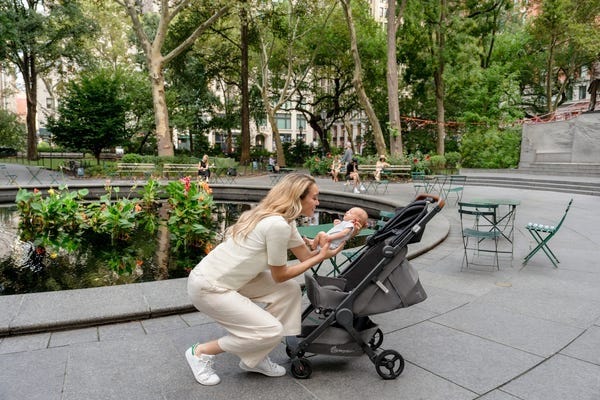

Advantages of Using Strollers for Nature Adventures
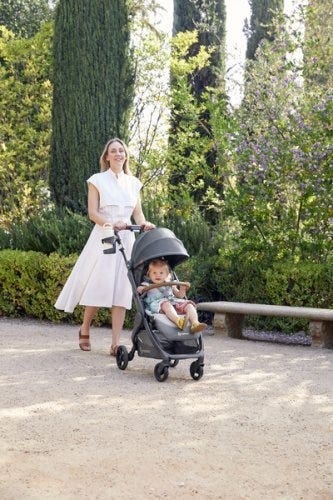

While baby carriers are fantastic for mobility and closeness, depending on the adventure of choice you might want to be a stroller along too.
There are a LOT of baby stroller options on the market. So we understand how confusing it can be to choose the one that’s right for your family. Not only are there a variety of brands, but a variety of strollers that serve different purposes.
There are a few types of strollers on the market:
- Full-sized stroller: This is typically the stroller parents thing of buying for all its versatility.
- Lightweight or umbrella stroller:These compact strollers are perfect for on-the-go adventures.
- Jogging stroller: Designed for parents who want to combine fitness with outdoor adventures.
- Double stroller: Designed for parents with multiple kids, especially twins.
- Car seat carrier: These strollers connect to a specific car seat. We don't typically recommend these as they can be unsafe for baby and uncomfortable for parents who are pushing.
Learn more about the types of strollers and which one would be best for you.
Benefits of Bringing a Stroller
- Storage Space for Gear: Ample room for carrying all your essentials like a diaper bag, beach toys and more.
- Shade and Weather Protection: Built-in canopies to shield your baby from the sun when they are lounging.
- Options: If you have more than one kid, you can stroll with one and carry the other. Or, if you’re getting warm or your little one is getting fussy, you can switch up their position from stroller to carrier or vice versa.
Safety Tips for Strollers
- Ensure your stroller is in good working condition. Make sure buckles are still buckling and that there are no rips or holes that could compromise your baby’s safety.
- Use sunshades or bug nets to protect your little one’s skin.
- Securing the baby properly: always buckle up your baby for safety even if you think they are old enough to go without the buckle.
Combining Baby Carriers and Strollers
For the ultimate flexibility, consider using both a baby carrier and a stroller on your outings.
Combining both options allows you to adapt to different situations. Use the carrier for more rugged trails and switch to the stroller for smoother paths or when your baby needs a nap.
Transition Tips
- Smooth Transitions: Plan stops where you can easily switch from carrier to stroller.
- Pack Light: Only bring essentials to make transitions easier.
Tips for a Successful Adventure
Planning Ahead
- Route Planning: Choose baby-friendly trails and parks. Check local mom groups or outdoor groups and get recommendations for the best outings for kids.
- Check Weather Conditions: Avoid extreme heat or unpredictable weather. Even with our most breathable carriers, when it’s hot, it’s hot. And having two bodies against each other in the heat will be naturally hot and sticky already.
- Packing Checklist: Include diapers, snacks, water, sunscreen, and a first-aid kit. These all-position carriers have storage pockets where you can fit some of the items easily!
- Stay Hydrated and Nourished: Pack healthy snacks to keep energy levels up and bring plenty of water for both you and baby.
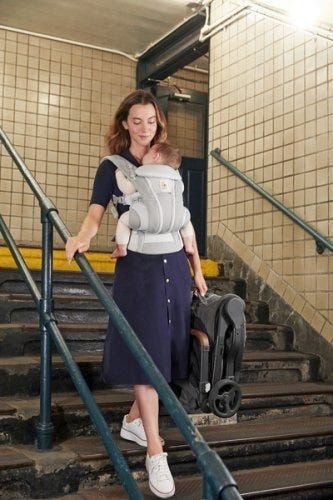

Summer adventures with your baby are a wonderful way to create lasting memories and enjoy the beauty of nature together. From baby carriers to strollers, Ergobaby products are designed to provide comfort and ease for both you and your little one. So, gear up, get outside, and explore the world with your baby by your side.
Ready to embark on your own summer adventures? Check out Ergobaby’s range of baby carriers and strollers to find the perfect match for your family’s needs. Visit our website today and start planning your next outdoor excursion!





